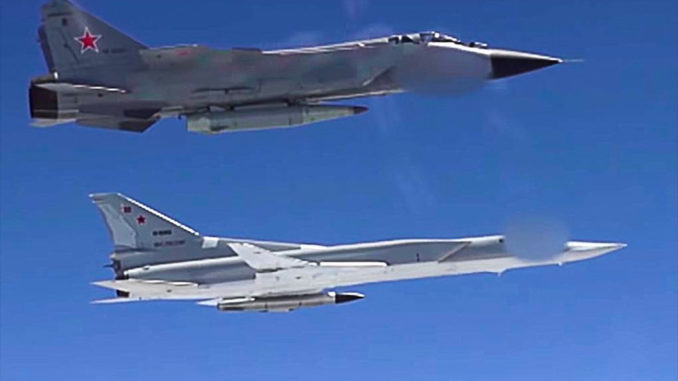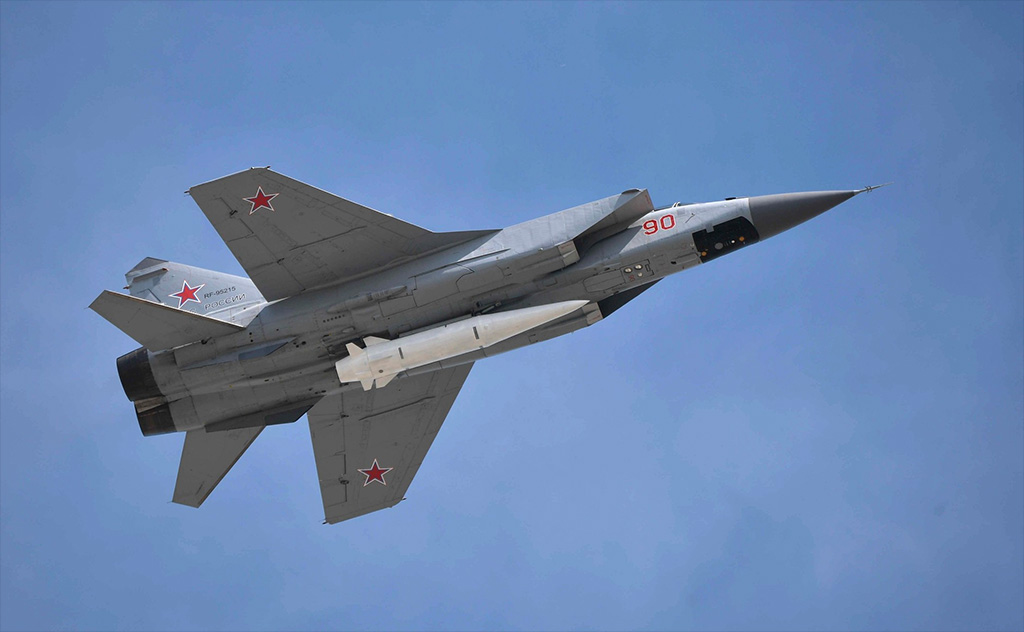
Russia has made significant strides in its hypersonic missile technology has even been acknowledged by its arch-rival – The United States of America.
In his 2018 State-of-the-Nation speech, Russian President Vladimir Putin revealed a slew of new offensive hypersonic systems. Since then, Moscow has been regularly testing or deploying some of these weapons.
Now the nation’s Strategic Missile Force is set to make the second regiment of UR-100N UTTKh intercontinental ballistic missiles (ICBMs) carrying Avangard hypersonic glide vehicles operational by the end of this year, reported Tass.

“Under the existing plans, the second regiment of Avangards will assume combat alert as part of silo-based launchers and a command post of a regiment of the Strategic Missile Force’s 13th missile division approximately in December 2022,” an unnamed official from the Russian Ministry of Defense was quoted as saying.
Russian state media had previously reported that the first Avangard hypersonic missile regiment entered combat duty in the Yasny missile division in the Orenburg Region in late 2019.
On January 20, Russian Defense Minister Sergey Shoigu announced that the first regiment had been fully rearmed for Avangard ICBMs with hypersonic boost-glide vehicles.
Russia’s Operational Hypersonic Weapons
The Avangard is a hypersonic glide vehicle that assumed combat duty in December of 2019. It can be launched to the highest point on its flight path by a number of ICBMs, notably the RS-28 Sarmat, the country’s newest and most sophisticated intercontinental ballistic missile.
The Avangard glide vehicle has no onboard engine and relies on reentry to achieve its high speeds. However, it is said to have dynamic maneuvering capabilities in flight to avoid intercept.
President Vladimir Putin had previously said, “The weapon is capable of performing sharp maneuvers on its way to targets making it absolutely invulnerable for any missile defense system.”
The Avangard system has a top speed of Mach 20, or 24,696 kilometers per hour, and can carry a nuclear or conventional payload. At least four Avangard-equipped missile systems are presently serving in Russia’s Strategic Missile Forces.
Another nuclear-capable ballistic missile in Russia’s inventory is Kinzhal (‘Dagger’), which can be launched from a Tu-22M3 bomber and has a range of nearly 3,000 kilometers. It has a top speed of Mach 12.
The missile can be mounted on MiG-31K interceptors. There is speculation that a small Kinzhal variant for the Su-57 stealth fighter is also in the pipeline. Kinzhal assumed combat duty at the end of 2018. However, it’s still unknown how many of these missiles have been built so far.

The Kinzhal is a modified version of the 9K720 Iskander, a short-range ballistic missile launched from the ground, with a new guidance system built exclusively for air-to-ground operations. The Kinzhal can maneuver at any point along its flight path.
The EurAsian Times had recently reported that Russia has stationed a MiG-31K ‘Foxhound’ fighter jet armed with a Kinzhal hypersonic land-attack missile in Kaliningrad along the Baltic Coast amid growing Ukraine tensions.
Anti-Ship Hypersonic Missile
The 3M22 Tsirkon, also known as Zircon (NATO reporting name SS-N-33), is a winged anti-ship hypersonic cruise missile with a top speed of over Mach 8 and a range of over 9800 kilometers per hour.
For ground strike operations, the Tsirkon will reportedly have a range of about 1,500 kilometers and somewhat less for naval targets. Russia’s Tsirkon hypersonic missile is close to completion of its state trials, with mass manufacturing set to begin in 2022.
Admiral Golovko, the third frigate in the Project 22350 Admiral Gorshkov class, would apparently become the first Tsirkon carrier. Russia’s modernized Gremyashchiy class corvettes, as well as the two Kirov-class battlecruisers Petr Velikiy and Admiral Nakhimov, are possible candidates. Tsirkon, according to Russian defense analysts, can put US carrier strike groups (CSGs) at risk and prevent carrier wings from operating properly.
The existence of Kh-95, considered Russia’s newest hypersonic missile, was announced in the August 2021 edition of the Russian journal Military Thought by Colonel-General Vladimir Zarudnitsky.
“Today supremacy in the air is a vital condition for ground and naval groupings of troops (forces) to conduct combat operations successfully,” Zarudnitsky wrote.
“For this purpose, Russia is developing and accepting such advanced and upgraded armaments, military and special hardware for service in its Aerospace Force as the Tu-160M strategic missile-carrying bomber, the Kinzhal airborne hypersonic missile system, and long-range air-launched precision weapons, in particular, the X-95 [Kh-95] hypersonic missile.”
The Kh-95 seems to be a long-range hypersonic cruise missile that could meet a critical mission requirement for a standoff hypersonic weapon capable of defeating NATO air defenses while being fired beyond the effective engagement ranges of Western interceptors. It is believed that the missile will be equipped with the upgraded Tu-160M and Tu-23M bombers.
In August 2021, US Strategic Command chief Charles Richard had acknowledged that Russian hypersonic technology will provide its Navy with a significant edge.
“Our current ground-based and space-based sensor system may not be able to cope with the detection and tracking of these missiles. I must admit that Russia is the world’s leading country in hypersonic technology. And if the enterprises of our defense industry in a short time do not figure out how to resist them, the ships of the fleets of the NATO countries will become vulnerable,” Richard said speaking at the annual symposium on space defense.
